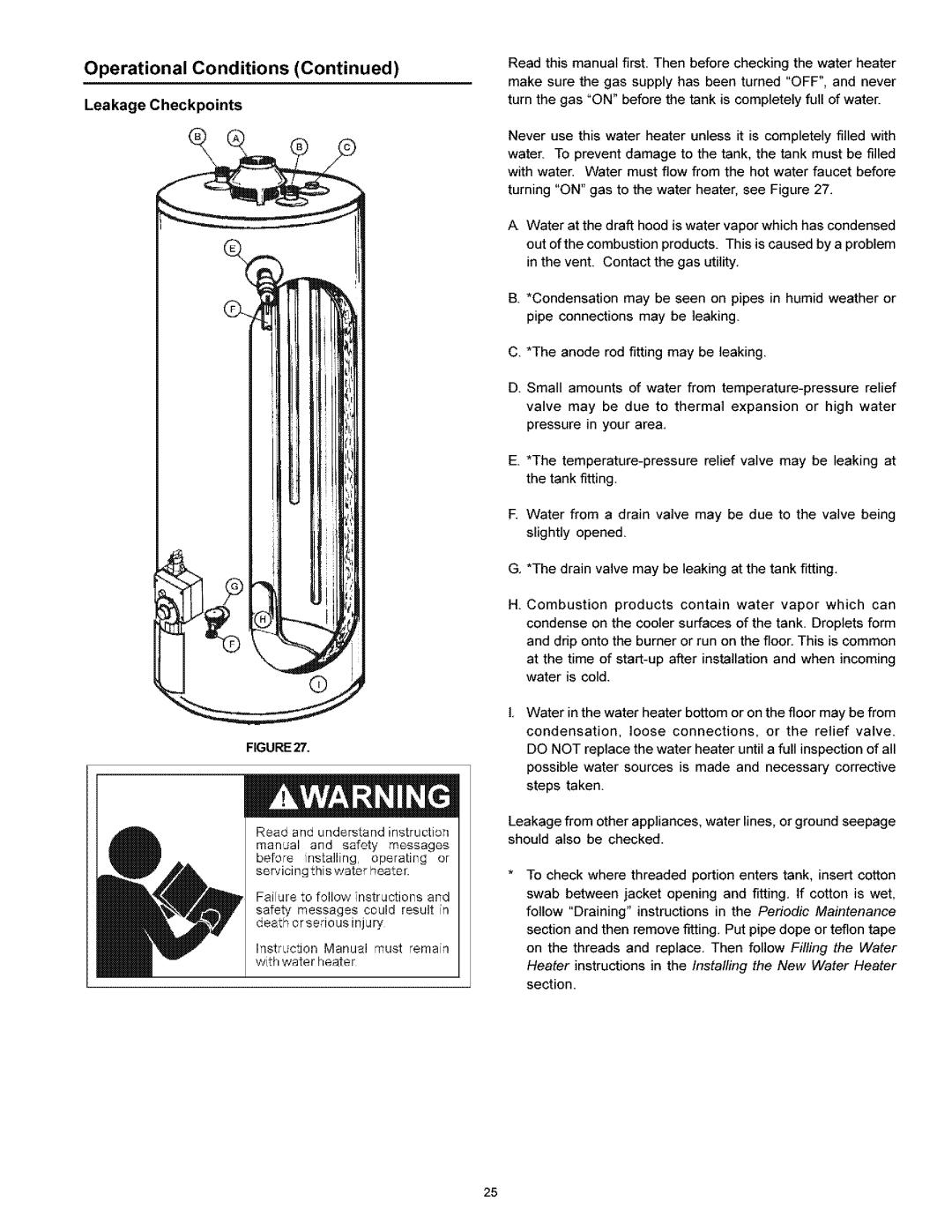
Operational Conditions (Continued)
Leakage Checkpoints
j
ILII/I ,
ii:
I:
I,I
©
FIGURE27.
Read and understand instruction
mam._al and safety messages
before installing, operating or servicing this water heater.
Failure to follow instructions and safety messages could result hi death orserious injury
InstrLction Manual must remain with water heater
Read this manual first, Then before checking the water heater make sure the gas supply has been turned "OFF", and never turn the gas "ON" before the tank is completely full of water.
Never use this water heater unless it is completely filled with water. To prevent damage to the tank, the tank must be filled with water. Water must flow from the hot water faucet before turning "ON" gas to the water heater, see Figure 27.
AWater at the draft hood is water vapor which has condensed out of the combustion products. This is caused by a problem in the vent. Contact the gas utility.
B.*Condensation may be seen on pipes in humid weather or pipe connections may be leaking.
C. *The anode rod fitting may be leaking.
D. Small amounts of water from
E. *The
R Water from a drain valve may be due to the valve being slightly opened.
G. *The drain valve may be leaking at the tank fitting.
H. Combustion products contain water vapor which can condense on the cooler surfaces of the tank. Droplets form and drip onto the burner or run on the floor. This is common at the time of
Water in the water heater bottom or on the floor may be from
condensation, loose connections, or the relief valve. DO NOT replace the water heater until a full inspection of all possible water sources is made and necessary corrective steps taken.
Leakage from other appliances, water lines, or ground seepage should also be checked.
*To check where threaded portion enters tank, insert cotton swab between jacket opening and fitting. If cotton is wet, follow "Draining" instructions in the Periodic Maintenance section and then remove fitting. Put pipe dope or teflon tape on the threads and replace. Then follow Filling the Water Heater instructions in the Installing the New Water Heater section.
25
